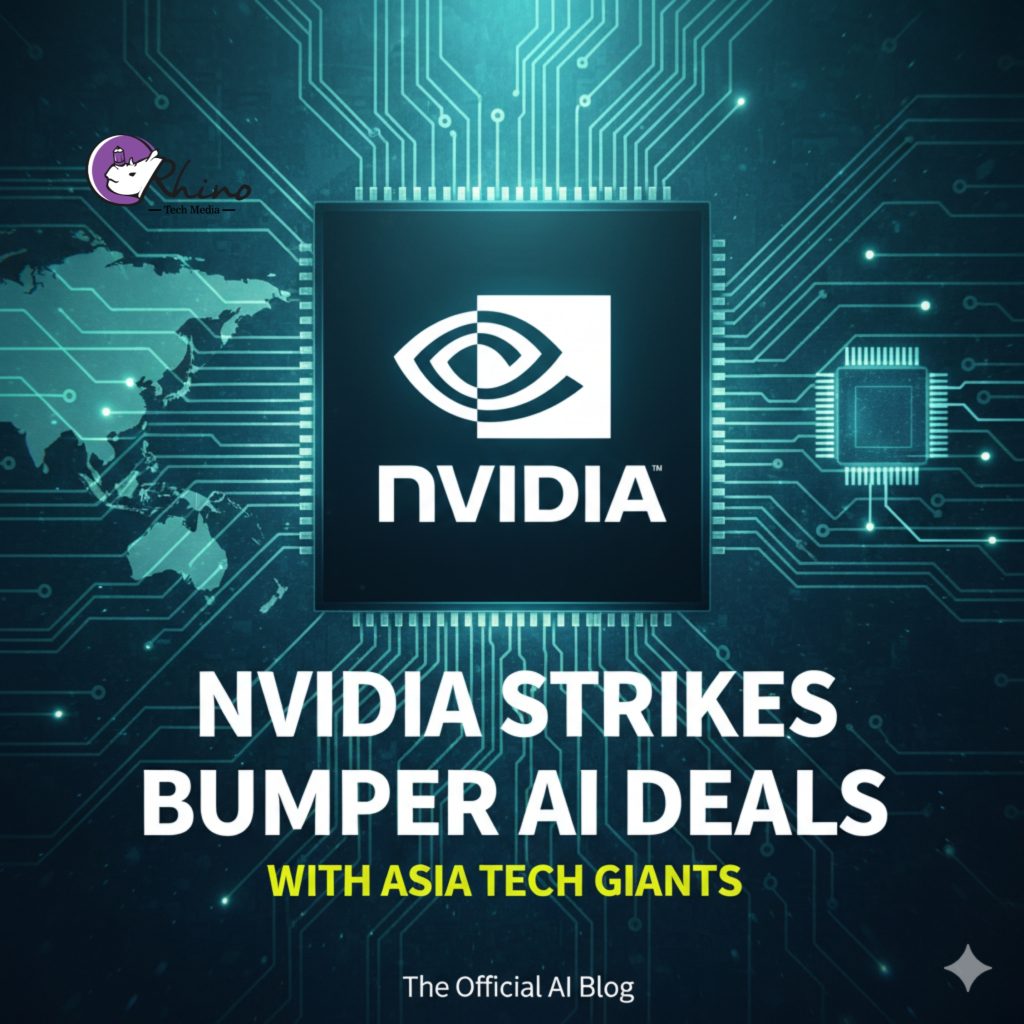Nvidia’s recent flurry of partnerships across Asia marks a decisive step in its race to dominate the global AI infrastructure market. Over the past week the company announced a series of large-scale agreements — most prominently in South Korea and with major cloud and internet players in the region — that together highlight both the intense commercial demand for advanced AI compute and the strategic shifts caused by geopolitical trade controls. These deals deepen Nvidia’s commercial footprint in Asia, accelerate local AI capacity-building, and underline why investors have driven the company to record market valuations. (Reuters)
What was announced (the facts)
The largest single announcement was a commitment to supply more than 260,000 of Nvidia’s latest Blackwell-series AI chips to South Korea. The package — disclosed during high-level meetings at the APEC forum — will funnel GPUs to a mix of sovereign cloud projects and major corporations, with planned recipients including the South Korean government and large firms such as Samsung, SK Group, Hyundai and leading internet companies. The government intends to use a tranche of the GPUs to expand national cloud AI infrastructure while corporations will deploy them in smart factories, automotive AI, cloud services and research. (Reuters)
Separately, Nvidia has been formalizing partnerships with major Asian cloud and internet players. Notably, Alibaba has agreed to integrate Nvidia’s software and hardware tools into its cloud and AI stacks — an arrangement intended to accelerate model development and data-center capabilities across Alibaba Cloud customers. That partnership is part of a broader set of tie-ups in the region designed to make Nvidia’s platforms available to local AI developers and enterprises. (TechCrunch)
These business wins came at a moment when Nvidia’s market capitalization briefly crossed historic milestones driven by investor enthusiasm for AI hardware — a backdrop that emphasizes both the commercial scale of Nvidia’s opportunities and the expectations priced into the company today. (Reuters)
Why these deals matter (strategic implications)
- Supply + demand concentration for advanced GPUs. Training and running today’s large generative models requires massive GPU capacity. By locking in multi-hundred-thousand GPU shipments and deep partnerships with cloud providers, Nvidia both supplies immediate demand and deepens customer lock-in for its software stacks, tools and ecosystem. (Reuters)
- Geopolitical hedging and market diversification. U.S. export controls on cutting-edge chips to China have complicated Nvidia’s ability to sell its newest processors into the world’s largest tech market. Strengthening ties with South Korea, Japan and other Asian markets allows Nvidia to grow sales in regions less constrained by those restrictions while continuing commercial engagement with non-restricted partners. That diversification reduces single-market dependency and raises alternative growth pathways. (Reuters)
- Ecosystem effects — from data centers to applications. Deals with cloud providers and industrial groups accelerate the deployment of “AI factories” (integrated compute + software + domain data) across manufacturing, telecoms, retail and autonomous vehicles. This turns GPU shipments into long-term revenue through software, preconfigured systems, developer tooling and managed services. (NVIDIA Newsroom)
Economic and market consequences
Nvidia’s ability to secure multi-hundred-thousand GPU orders and anchor partnerships with hyperscalers and industrial giants has been a major factor behind its recent valuation surge and the extraordinarily positive investor sentiment. Analysts point to multi-hundred-billion-dollar bookings for AI chips and large government and enterprise projects as justifying aggressive future revenue expectations — though those expectations also increase scrutiny over whether current valuations fully reflect execution and regulatory risks. (Reuters)
Risks and constraints
- Export controls and geopolitics. While South Korea and select partners offer growth avenues, U.S. rules on advanced AI chip exports to China remain a limiting variable — future sales and revenue projections can be materially affected by evolving policy. (Reuters)
- Supply chain and manufacturing scale. Meeting the demand implied by these contracts requires steady wafer, packaging and memory supply (e.g., HBM) and close coordination with contract manufacturers; any bottleneck risks shipment delays or margin pressure. (NVIDIA Newsroom)
- Competition and customer diversification. Rivals (chipmakers, cloud providers developing custom accelerators) and open-source software trends could blunt long-term pricing power unless Nvidia continues to innovate up and down the stack. (news.bloomberglaw.com)
Conclusion
Nvidia’s recent “bumper” deals with Asia’s tech giants and governments illustrate the company’s central role in the AI infrastructure era. By supplying large volumes of cutting-edge GPUs and partnering with regional cloud and industrial champions, Nvidia accelerates AI adoption across industries while building durable commercial moats through hardware, software and services. At the same time, the company’s gains are inseparable from geopolitical dynamics and supply-chain realities that will shape how much of the near-term promise becomes long-term, sustainable growth. Observers should watch delivery timelines, local ecosystem adoption, and policy shifts closely — these will determine whether the headline deals translate into lasting industrial transformation or simply a near-term revenue surge. (Reuters)

